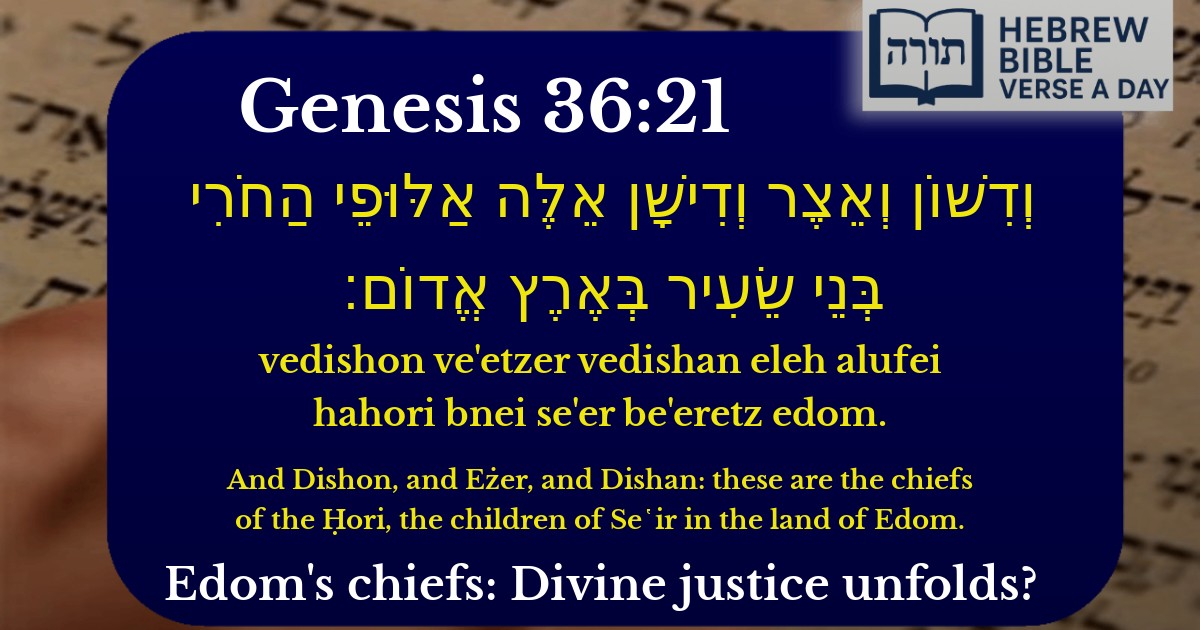Join Our Newsletter To Be Informed When New Videos Are Posted
Join the thousands of fellow Studends who rely on our videos to learn how to read the bible in Hebrew for free!
Hebrew Text
וְדִשׁוֹן וְאֵצֶר וְדִישָׁן אֵלֶּה אַלּוּפֵי הַחֹרִי בְּנֵי שֵׂעִיר בְּאֶרֶץ אֱדוֹם׃
English Translation
And Dishon, and Eżer, and Dishan: these are the chiefs of the Ḥori, the children of Se῾ir in the land of Edom.
Transliteration
Vedishon ve'etzer vedishan eleh alufei hahori bnei se'er be'eretz edom.
Hebrew Leining Text
וְדִשׁ֥וֹן וְאֵ֖צֶר וְדִישָׁ֑ן אֵ֣לֶּה אַלּוּפֵ֧י הַחֹרִ֛י בְּנֵ֥י שֵׂעִ֖יר בְּאֶ֥רֶץ אֱדֽוֹם׃


Context in Sefer Bereishit
The verse lists the chiefs of the Ḥori, descendants of Se'ir, who inhabited the land of Edom before the children of Esav (Edom) conquered it. This passage appears in Bereishit 36:21 as part of the genealogy of Esav's lineage, emphasizing the transfer of power in Se'ir from the indigenous Ḥori to the descendants of Esav.
Rashi's Commentary
Rashi (on Bereishit 36:20) explains that the Ḥori were the original inhabitants of Mount Se'ir, named for their dwelling in caves (ḥorim, from the Hebrew root חור, meaning "cave"). He notes that these chiefs were later displaced by Esav's descendants, fulfilling the divine plan that Esav would inherit Se'ir (as hinted in Devarim 2:12).
Ramban's Insight
The Ramban (on Bereishit 36:20-21) elaborates that the Torah meticulously records these names to establish the legitimacy of Edom's possession of Se'ir. Since the land was initially inhabited by the Ḥori, the Torah documents their chiefs to show that Esav's conquest followed a natural succession, similar to other nations displacing prior inhabitants.
Midrashic Interpretation
Halachic and Historical Significance
The Ibn Ezra (on Bereishit 36:21) highlights that these names reflect the political structure of ancient Edomite society, where tribal chiefs (aluphim) held authority. This structure parallels the later organization of the twelve tribes of Israel, showing how familial and tribal leadership was a common model in the region.